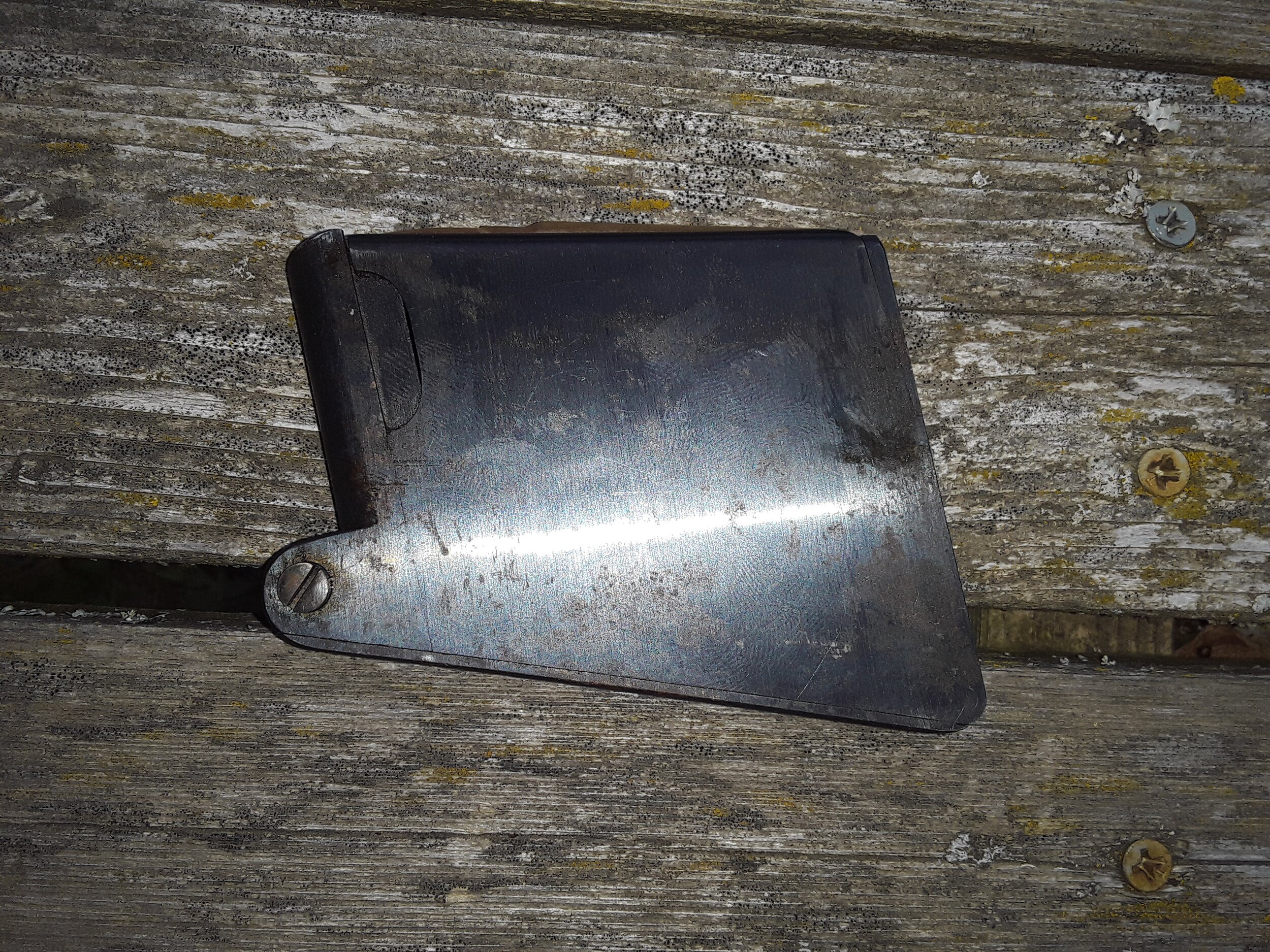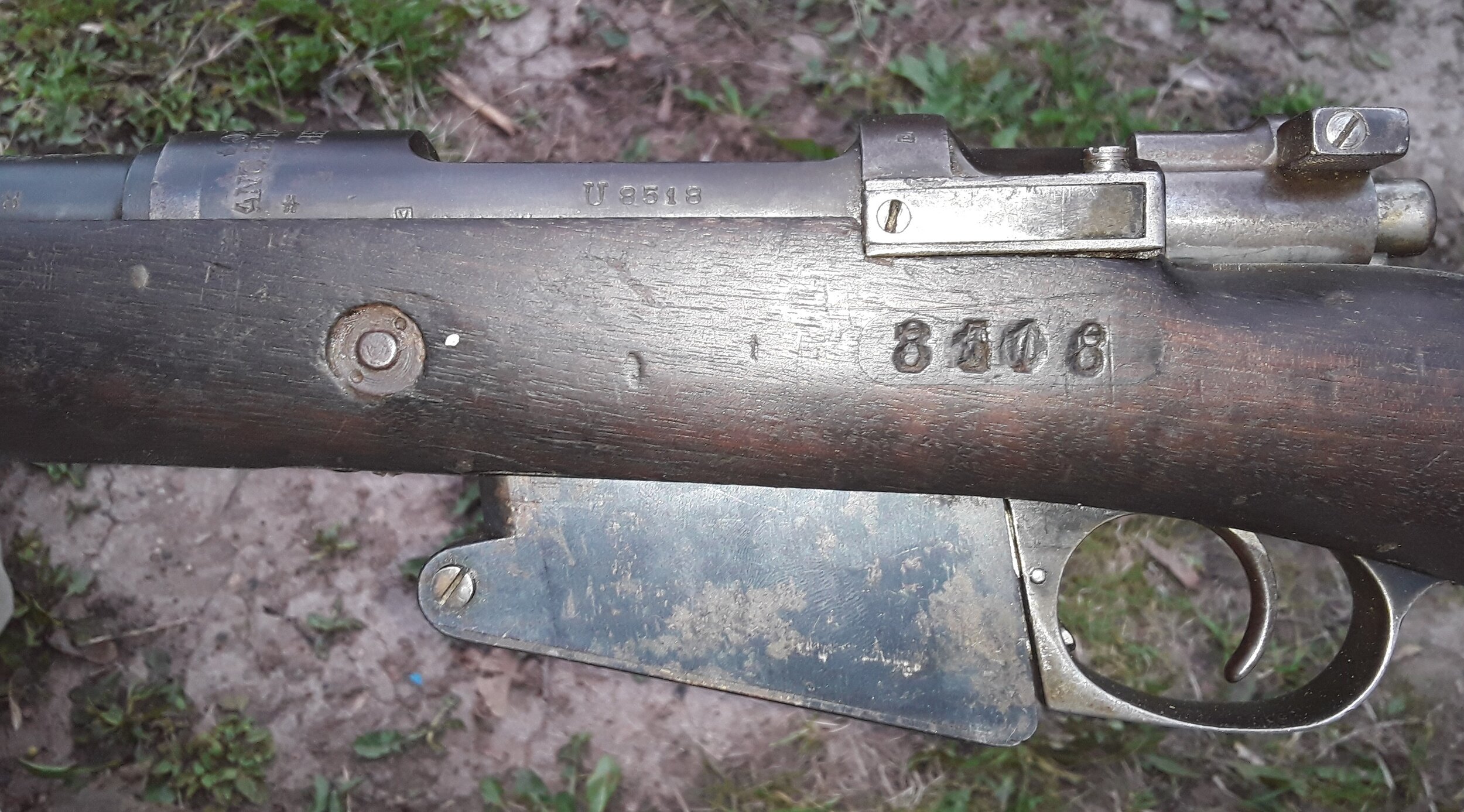Mauser Model 1889/36
An upgraded version of the Mauser 1889 that had equipped the Belgian Army during the Great War, this was an attempt to modernize the rifle in line with the new Model 1935.
The Kingdom of Belgium had been created in 1831 following their revolution against the Dutch, and had been neutral major European conflicts from that point onward. This did not mean that they did not participate in the scramble for empire in the latter nineteenth century, however, and a strong local arms industry combined with imperial ambitions to ensure a well armed Belgium. The introduction of smokeless powder led to a general international push for new weapon designs, and this led to the Germans adopting the Gewehr 88, replacing the Mauser 71/84 black powder repeater and in the process sidelining Paul Mauser.
The action of the Mauser 1889/36. Note the stripper clip guide, with the bolt stop also serving to help secure clips during loading.
The result was that the new smokeless design he was working on would instead appear in Belgium in 1889, a year after the German adoption of their Commission Rifle. The adopted Model 1889 was a long rifle with a cock on close action, with a barrel shroud similar to the German Gewehr 88. The main novel feature was the feed system, which consisted of a semi-detachable magazine containing five cartridges, using a disposable metal clip to quickly charge it. This “stripper clip” was revolutionary, immediately outclassing the then state of the are Mannlicher packet feeding system, and would soon become the gold standard around the world.
The magazine after removal. This would be done for cleaning, as the new stripper clips were intended to be used for loading the weapon.
The resulting design was considered vastly superior to the problematic German Commission Rifle, and soon Mauser began to export variations of the 1889 design around the world, notably to the Ottoman Empire and Argentina. The rifles used by the Belgians, however, would be produced domestically by FN in Herestal, who had secured the manufacturing license when the 1889 won the Belgian trials. By the time war came to Europe in 1914, the Belgian Army was fully equipped with Model 1889 rifles, but the loss of most of their territory led to difficulties in acquiring additional weapons, leading to contracts being taken out in both Britain and the United States. Belgium remained defiant until the end of the war, and the 1889 remained in use for the duration.
The side of the action, with the distinctive magazine attached.
Following the end of the war, the 1889 remained in service, as did the 7.65mm cartridge, but as FN moved to produce their Model 1924 (a short rifle with a Mauser 98 action), the 1889 was beginning ot show its age. After several delays due to poor interwar military budget, a new Mauser 1935, using a model 98 action with several features of both the model 1889 and the model 1924, and a need was likewise seen to being older rifles up to the new standard. The result was the Model 1889/36.
The distinctive front band and sight of the Model 1935 and Model 1889/36 Belgian Mausers
The upgraded rifle had been cut down to a short rifle, the shortened barrel likewise dropping the barrel shroud. The new barrel was itself a model 1935 barrel, including its sights, which consisted of a rear leaf sight graduated from 100 to 1900 meters in 100 meter increments, and a strong winged front sight taken from the German Kar98AZ. A short handguard reminiscent of the Kar98k was also added just as on the 1935. Otherwise, the 1889 action, magazine and stock were retained without modification, although the original manufacturer markings were obliterated and replaced with those of the arsenal that performed the conversion work. Most of this work was preformed either at Manufacture d'Armes de l'Etat or by Pieper, the former performing the vast majority of the upgrades.
The left hand side of the action
When the Germans invaded in May of 1940 the situation for Belgium rapidly deteriorated as it did for the other Allies that summer. After eighteen days of resistance King Leopold III surrendered, ending official military resistance in Belgium, although many soldiers made their way to Allied forces to continue the fight. In addition, the Force Publique from the Belgian Congo continued to fight for the Allies, notably in pushing the Italians out of Ethiopia, and later with deployments against the Japanese in Burma, often armed with Model 1889/36 rifles.
The example in the author’s collection interestingly retains a Model 1889 bolt, although some traces of attempted modification to the 1889/36 standard (using a Mauser 98 type cock on open action on an 1889 bolt body) are visible despite the retention of a model 89 cocking assembly. Like all Belgian Mausers, the Model 1889/36 is a fairly rare sight in the United States, and the Pieper conversions are quite uncommon as far as this particular model is concerned.
Belgian Force Publique troops with Mauser 1889/36 rifles during the Second World War
*Note that this reflects the author’s example, which is an aberration. Most rifles of this type have a cock-on-close action.
Observed Values and Frequency
Updated: February, 2024
AVERAGE VALUE (USD): $600 - $800
FREQUENCY: Rare
COLLECTOR’S NOTES: Generally found in poor condition







